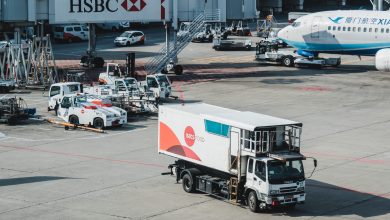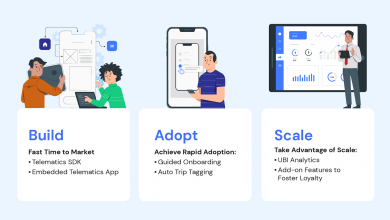Telematics- A revolution that is redefining the Indian automobile industry

The introduction of telematics and connected vehicle technologies have transformed automobiles
from vanilla transportation media into “computers on wheels”. Vehicles have now evolved as
intelligent, automated devices that can do much more than just being mere means to commute.
With Telematics, they not only move forward, steer, gear, and accelerate but also provide real-time
updates, predictive analytics, lane guidance, automatic assistance, in-vehicle experiences, and much
more.
As India emerges to be one of the fastest growing economies in the world, the vehicle telematics
market is poised to grow at a rapid pace. A study by Deloitte highlighted that 80% of Indian buyers
prefer vehicle connectivity; this number is significantly higher than consumers in Germany, wherein
only 36% prefer vehicle connectivity, along with China, Japan and the US at 76%, 49% and 46%,
respectively. The Commercial Telematics Market in India is expected to be USD 2.37 billion by 2027,
growing at a CAGR of 15.6%. Indian automobile companies like Kia, Hyundai and MG have already
deployed impressive connectivity features like real-time navigation for accurate traffic predictions,
online navigation that draws on cloud-based real-time and historical traffic data or AI technology-
based service that enhances your safety, security, and convenience.
Indian telematics is full of expectations about growth with these passenger vehicles and fleet
management markets are key drivers of the telematics segment. The “Indian Connected Trucks
Telematics Market” revealed that the telematics market in India is expected to grow at a 25% rate
over the years. There is no doubt about this as the technology brings a host of benefits like remote
diagnostics, and faster data insights enabling safety, security, and navigation of a vehicle’s
performance.
Remote Diagnostics for Real-Time Tracking
According to a study by Gartner, 50% of product-focused businesses are anticipated to have invested
in a real-time transport visibility platform by 2023. As it is challenging to just rely on a strict
monitoring system, remote fleet management comes to the rescue. The telematics platform enables
fleet managers to control their fleets from a computer or a smartphone app and communicate with
drivers in real time. Receiving real-time warnings for unexpected events, tracing down assets, and
checking the condition of vehicles are all made possible using the platform.
Machine learning can assess data inputs from a fleet of vehicles and provide feedback on any
changes in fleet management. Data on weather, road hazards, and traffic patterns, for instance, can
be utilised to forecast risks, notify drivers of impending dangers, and guide them through them.
Remote diagnostics offers a thorough picture of the condition and health of your whole fleet. Fleet
owners may access all improved diagnostics data from a single dashboard, which is often only
available at their dealer. This gives you complete control over how your fleet is maintained. Using
remote auto diagnostics will also help you save money by foreseeing impending repairs. A fleet’s
downtime and unneeded costs can both be avoided by preventing breakdowns and keeping up with
vehicle maintenance to avoid increased long-term costs.
Faster Data Insights Ensuring Vehicle Safety
The use of connected car technology enables access to a wide range of data. This accumulated data
closely deals with information specific to each vehicle, its operation, and the driver. It includes
metrics like real-time location, speed, fuel tank level, vehicle health status, battery condition,
odometer readings, tyre pressure, and more. It also helps in reducing operating costs through preventive vehicle maintenance, remote vehicle diagnostics, support from OEM service teams,
decreased fuel usage, and analysis and driver behaviour correction.
Business and governmental fleets too can track the fuel consumption, speed, and idling time of
vehicles, among other things, with the use of telematics. This can be used to strengthen compliance,
boost efficiency, and manage and improve driving behaviour and road safety. Putting in place a fleet
telematics solution can aid in providing intelligence for strategic planning, like right-sizing your fleet
or planning daily routes.
With the advancements in emerging technologies, the experience of driving is transforming With the
plethora of wireless connectivity options and the availability of fast mobile internet, new markets
are opening up to fully realise the connected car technology. From enhancing driver convenience &
safety to allowing new business models for automakers and other ecosystem participants, Indian
businesses are also starting to understand that telematics will enable them to not only track their
fleets but also transform remote manageability of vehicles and the adjoining ecosystem. As more
sophisticated technologies keep emerging, telematics organizations will drive Vehicle-to-Vehicle
(V2V) and Vehicle-to-Infrastructure (V2I) communication capabilities and open the door to a new
world of e-mobility with advanced automotive suppliers, parts, and services. With EV manufacturing
on the rise, India becoming a hub for Li-ion battery OEM’s , telematics will play a pivotal role in
driving and anchoring the ecosystem. Telematics will ensure endless possibilities across industries
supporting multiple use cases in private and government.
About the Author:
Sameer Mahapatra, Country Manager-India & SAARC, Aeris Communications




